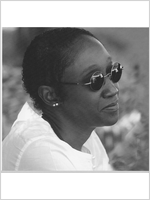‘African art’ en ‘Global art’ zijn geen eenduidige begrippen. Met de publicatie van het polemische Project ‘1975’ essay ‘Een politiek van uitsluiting’ van Rikki Wemega-Kwawu, biedt SMBA een inleiding in de problematiek verbonden aan de definitie van Afrikaanse kunst. Wemega-Kwawu staat zeker niet alleen in zijn kritiek. Ook de uit Nigeria afkomstige Sylvester Okwunodu Ogbechie, professor Kunstgeschiedenis aan de University of California Santa Barbara, rekent af met de ‘eurocentrische definitie van hedendaagse kunst’ in zijn artikel ‘Where is Africa in Global Contemporary Art?’ in Savvy Journal.
Okwunodu Ogbechie stelt: ‘My estimate is that there are less than one thousand “Contemporary African artists” who live and work in the West although they account for 99 % of all artists included in international exhibitions of Contemporary African Art.’
Net als Wemega-Kwawu stelt hij dat de internationale interactie, het reizen en het contact met kunstenaars in andere landen, steeds meer de definitie van hedendaagse kunst bepaalt. Maar wie heeft eigenlijk de mogelijkheden om dit te doen? En welke rol spelen locatie, plaats en regio-specifieke geschiedenis bij de definitie van Afrikaanse kunst? Klik hier om Sylvester Okwunodu Ogbechie’s artikel ‘Where is Africa in Global Contemporary Art?’ te lezen in de online versie van Savvy Journal (pag. 24-31).

